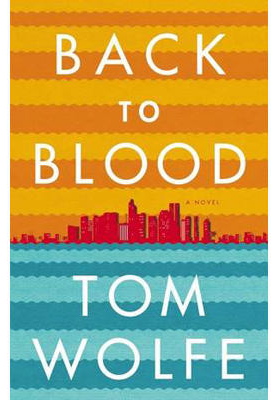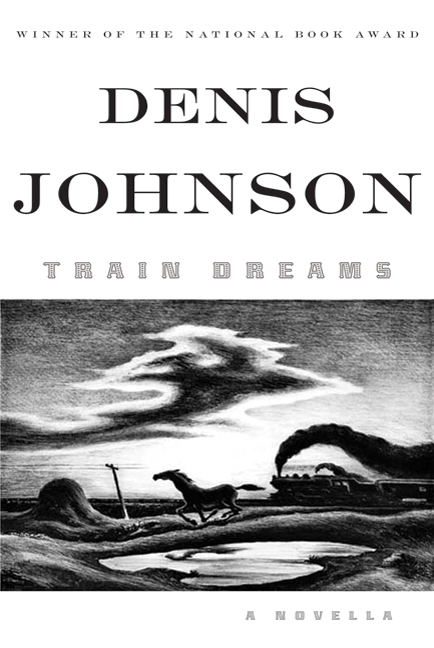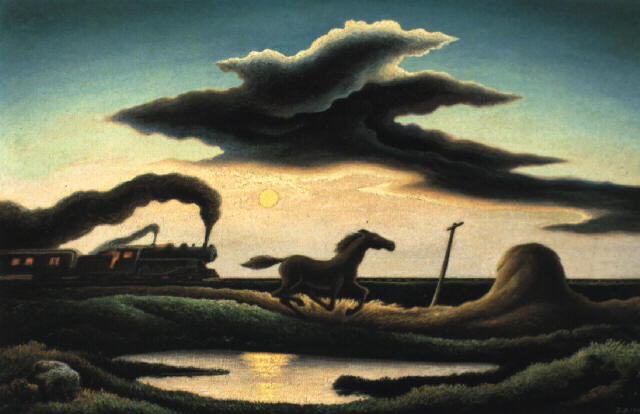.
.
The other day I began to read Tom Wolfe’s new novel, Back to Blood. Things were going fine until page 3. That’s where I came upon a physical description of a woman named Mac, wife of the editor of a Miami newspaper. Mac, the overwrought Wolfe urgently wants the reader to understand, is stunning. And so we read words, words, and more words that establish the proposition that Mac is stunning. Then, redundantly, Wolfe decides to tells us in no uncertain terms that Mac is . . . “stunning.” Finally, since Wolfe is not a man to let go of the obvious, he appends to the word “stunning” the filigree of an exclamation point:
“Stunning!”
Yes, a wee thing, this punctuation mark … (!) Like the falling of a small drop of rain.
But, dear reader, more drops fall. As when the swollen South Fork Dam collapsed, what follows is a veritable Johnstown flood of exclamation marks clotting the prose. Exclamation marks are pinned, wantonly, on utterances, thoughts, descriptions, and proper names — all without sense or grace.
.
.
How bad does this get?
Below, culled from pages 3 to 35 of Back to Blood, is every instance in which Wolfe felt an exclamation point was, somehow, appropriate. This list records the words or the word phrases that immediately precede the mark. In some instances, where it’s needed to convey the subject Wolfe wants emphatically to express, I’ve included the whole sentence.
Enjoy.
* * *
Stunning!
Absolutely gorgeous, this big girl of his!
Now!
This was the chance!
This was the crack in the wall of words he was waiting for!
An opening!
Never mind!
“Attractive” barely began to describe what he felt!
Such nice tender long legs the two girls had!
Perfect little cupcake bottoms … for him!
And that was obviously what they wanted!
Tighty-whiteys!
Oh, ineffable dirty girls!
Oh, ineffable Latin dirty girls!
An ordinary conversational voice!
The spell was broken!
Perfect little cupcakes!
Their short short-shorts!
Short short short-shorts!
Sex!
Sex!
Sex!
Sex!
Up on golden Lucite thrones!
Well, you are!
Good subject!
Everybody!
Get up!
Let’s go!
On the sand!
Now, that was an accomplishment!
FIDEL, SI!
PATRIOTISM, NO!
Even if I wanted him to!
Jesus Christ, those lights are bright!
Brake light on the back window!
A big black thing — huge!
Godalmighty! — it was a white Ferrari 403!
A Ferrari 403!
That’s a $275,000 car!
Why, that bitch!
That brazen little bitch!
LYING AND SAYING YOU DIDN’T!
Look at her!
You stupid bitch!
DON’T YOU DARE TALK TO ME LIKE THAT!
A NASTY LITTLE MONKEY IS WHAT YOU ARE!
Both of you! Stop!
Go to hell, bitch!
Why can’t they just stop!
SPEAK ENGLISH, YOU PATHETIC IDIOT!
SPEAK ENGLISH!
Rude bitch!
But Please, God!
God knows they’ve got the money!
Oh, yes!
There!
Everybody … all of them … it’s back to blood!
A leaning pool!
Blond hair! — and blue eyes!
The blond ones! — with blue eyes!
As far as SMACK that goes!
Pumping iron!
That’ll do the trick!
Dense!
Nnnnnnooooooooooooo!!!
Gym!
—dense!—
Magdalena!
That day!
Nes-ter!
Wait a minute!
The “eyes”!
So dismissive!
Such a rebuke!
Impudent and a half!
Straight out!
The anger he felt!
If only he had added a “Sarge”!
He’s still a sergeant!
Blown out of the water!
Quick!
Throw in a Sarge right now!
Sarge and Sarge!
Jesus Christ!
He dares say!
Most revered figure in Cuban history!
The filth right in the face!
And this is not Marti’s birthday!
Even with that!
Canadian!
Holy shit!
Up there!
Canadians!
It would take a genius to catch on!
But get hold of yourself!
Expelled from the force!
Canned!
Kicked out!
Biscayne Bay!
He’d be finished!
Magdalena, too!
Magdalena!
Eighty-fucking-two feet!
The man on the mast!
Up on top of the forward mast!
He’s up as high as the tontos on the bridge!
He did it!
He did it!
With the fluid power of a tiger he did it!
Slid it!
Slid a sliding door open!
Without fucking up!
Christ it was hot out there on the deck!
Scorching!
Enervating!
Miami summer sun!
Cries!
Exhortations!
Imprecations!
Ululations!
Supplications!
Boos!
Biscayne Bay!
A regular rubber room, this deck was!
Girls — all but stark naked!
Wild blond hair!
Wisps of thong bikini bottoms that didn’t even cover the mons pubis!
Almighty God, I beseech thee, don’t let me … fuck up!
* * *
That prayer reaches the reader at page 35.
It’s hard for me to express, in my own words, the feeling that wells up inside me when I realize another 669 pages stand between me and the final exclamation on the novel’s final page.
So, to express the moment, let me borrow an exclamation from Mr. Tom . . . and at the same time pay homage to Mr. Bill.
Let me shout out my feelings thus:
Ohhhh Nnnnnnooooooooooooo!!!
* * *
NOTES
1. If my audit of pages 3-35 missed some exclamation marks, please forgive me. Or better still, thank me.
2. [Spoiler Alert] The novel’s final exclamation, intended to send the reader off with a grin: “That’s … so … wonderful!”
3. A tip of the hat to James Wood whose dissection of Back to Blood in this week’s The New Yorker includes a couple of remarks about Wolfe’s overuse of exclamation marks. Wood refers to them as “the blurting, Tourette’s-like exclamations” and notes how Wolfe’s excitability works counter to the individualization of his characters: “In the regime of the enforced exclamation mark, everyone is equal.”
.



